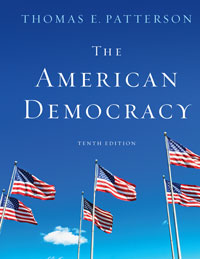
The American Democracy, 10th Edition (Patterson)Chapter 11: Congress: Balancing National Goals and Local InterestsChapter OverviewThe author details the nature and relationship of congressional election and organization. In describing the factors affecting electoral politics, he focuses primarily on the issue of incumbency, its advantages, and its drawbacks. The discussion includes an assessment of the influence of these electoral campaigns on members of Congress. The author then examines the organization of the institutions of the House and Senate, and the nature and sources of congressional leadership. Congress is organized in part along political party lines; its collective leadership is provided by party leaders of the House of Representatives and the Senate. These party leaders do not have great formal powers. Their authority rests mainly on shared partisan values and the fact that they have been entrusted with leadership responsibility by other senators or representatives of their party. Most of the work done in Congress is done by committees. There is a complex but long-established structure of permanent and temporary committees in Congress. The author discusses the power structure of these committees, their rules and duties, and the seniority system that governs them. The steps of lawmaking are then explained, from the introduction of a bill through the committee work, floor actions, and passage into law. The three major roles of Congress—lawmaking, representation, and oversight—are discussed, with analysis of the degrees to which Congress performs or fails to perform these functions well. The fragmented and partisan natures of Congress are explored with an eye to their effects on the ability of the institution to function effectively, as intended by the constitutional framers. The main points of this chapter are as follows:
|  |















